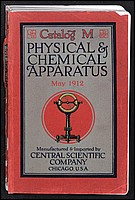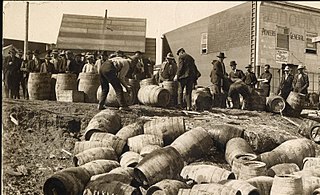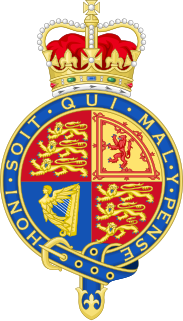Canadian Liquor Plebiscites were held on October 25, 1920 [1] in the provinces of Alberta, Manitoba, Nova Scotia and Saskatchewan under the Canada Temperance Act and the Dominion Elections Act.

Alberta is a western province of Canada. With an estimated population of 4,067,175 as of 2016 census, it is Canada's fourth most populous province and the most populous of Canada's three prairie provinces. Its area is about 660,000 square kilometres (250,000 sq mi). Alberta and its neighbour Saskatchewan were districts of the Northwest Territories until they were established as provinces on September 1, 1905. The premier has been Rachel Notley since May 2015.

Manitoba is a province at the longitudinal centre of Canada. It is often considered one of the three prairie provinces and is Canada's fifth-most populous province with its estimated 1.3 million people. Manitoba covers 649,950 square kilometres (250,900 sq mi) with a widely varied landscape, stretching from the northern oceanic coastline to the southern border with the United States. The province is bordered by the provinces of Ontario to the east and Saskatchewan to the west, the territories of Nunavut to the north, and Northwest Territories to the northwest, and the U.S. states of North Dakota and Minnesota to the south.

Nova Scotia is one of Canada's three Maritime Provinces, and one of the four provinces that form Atlantic Canada. Its provincial capital is Halifax. Nova Scotia is the second-smallest of Canada's ten provinces, with an area of 55,284 square kilometres (21,300 sq mi), including Cape Breton and another 3,800 coastal islands. As of 2016, the population was 923,598. Nova Scotia is Canada's second-most-densely populated province, after Prince Edward Island, with 17.4 inhabitants per square kilometre (45/sq mi).
Contents
The Canada Temperance Act, also known as the Scott Act, allowed provincial and municipal jurisdictions to formulate their own legislation regarding alcohol consumption based upon the results of a plebiscite. The results could not be challenged for at least three years. Between 1916-19 prohibition legislation passed in all the provinces. The sale of alcoholic liquors, except for medical and scientific purposes, was prohibited. In 1920, eight of the nine provinces decided to continue prohibition after the war. The Canadian liquor plebiscite addressed this postwar prohibition. [2] The plebiscite was set up to pose the question of banning liquor importation to provinces where prohibition had been enforced, but liquor could be ordered and imported by mail order. Ontario also had a plebiscite on the issue under the Temperance Act a few months later in 1921.

Liquor is an alcoholic drink produced by distillation of grains, fruit, or vegetables that have already gone through alcoholic fermentation. The distillation process purifies the liquid and removes diluting components like water, for the purpose of increasing its proportion of alcohol content. As liquors contain significantly more alcohol, they are considered "harder" – in North America, the term hard liquor is used to distinguish distilled alcoholic drinks from non-distilled ones.

Mail order is the buying of goods or services by mail delivery. The buyer places an order for the desired products with the merchant through some remote method such as through a telephone call or web site. Then, the products are delivered to the customer. The products are typically delivered directly to an address supplied by the customer, such as a home address, but occasionally the orders are delivered to a nearby retail location for the customer to pick up. Some merchants also allow the goods to be shipped directly to a third party consumer, which is an effective way to send a gift to an out-of-town recipient.

Ontario is one of the 13 provinces and territories of Canada and is located in east-central Canada. It is Canada's most populous province accounting for 38.3 percent of the country's population, and is the second-largest province in total area. Ontario is fourth-largest jurisdiction in total area when the territories of the Northwest Territories and Nunavut are included. It is home to the nation's capital city, Ottawa, and the nation's most populous city, Toronto, which is also Ontario's provincial capital.








